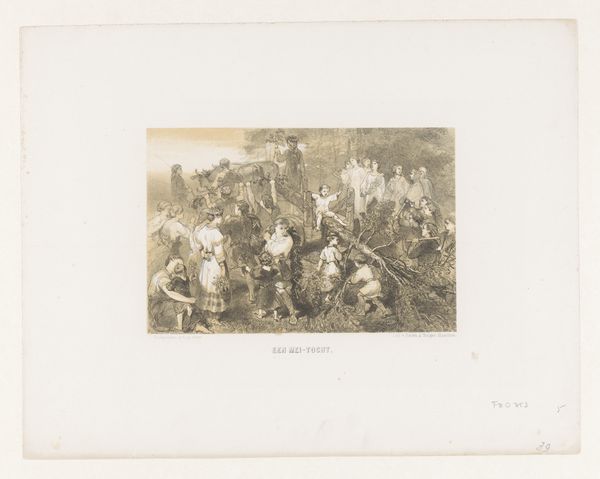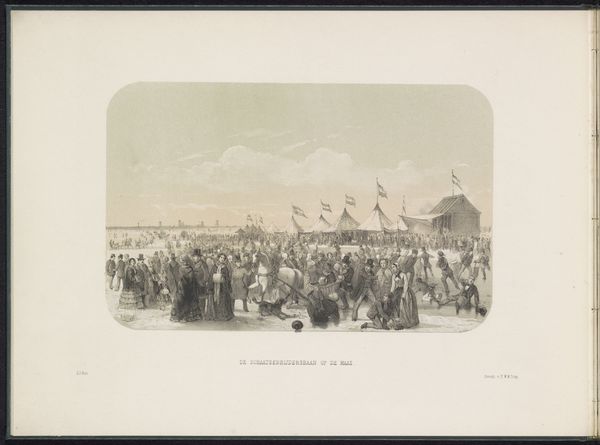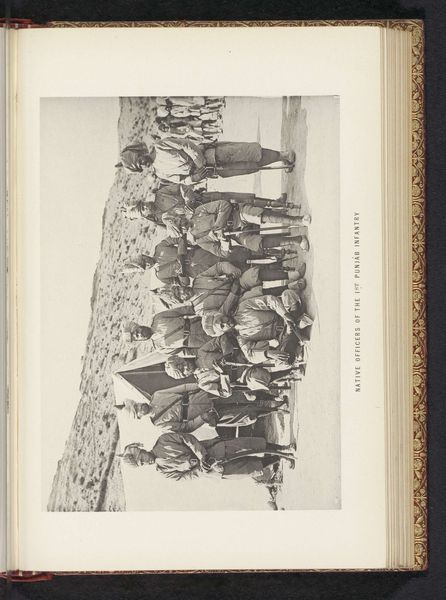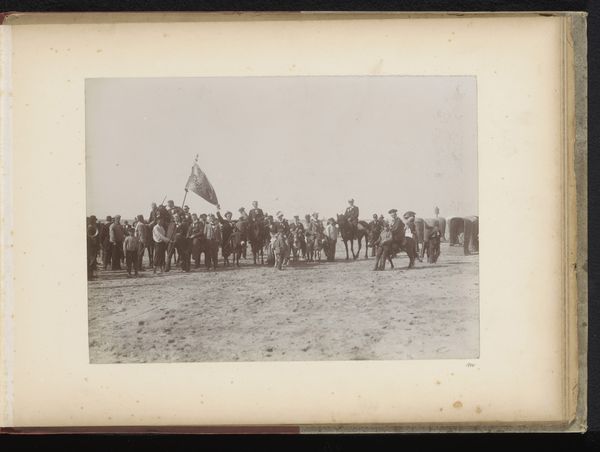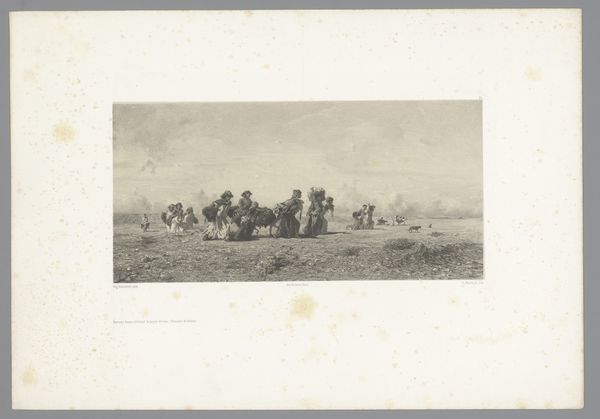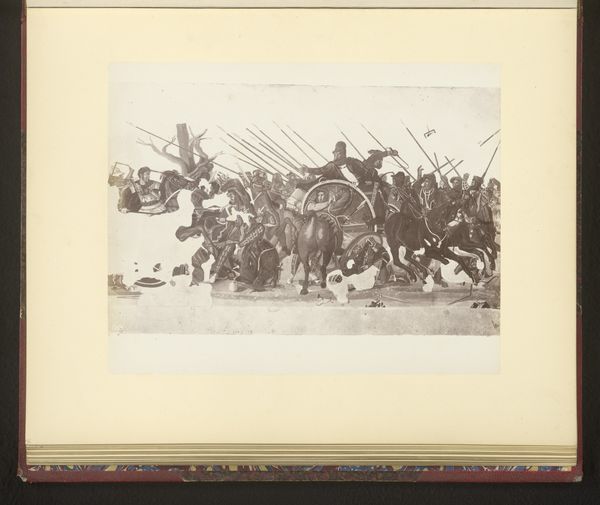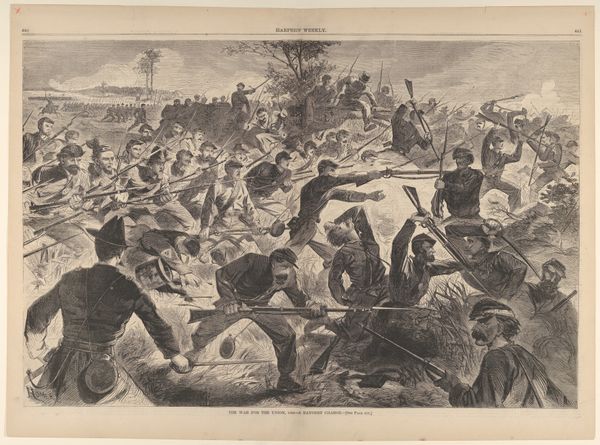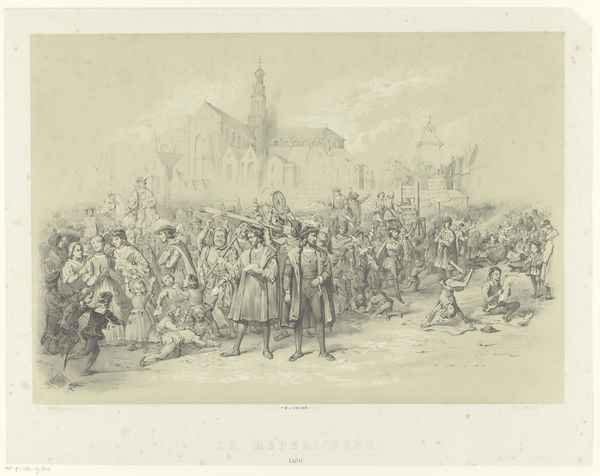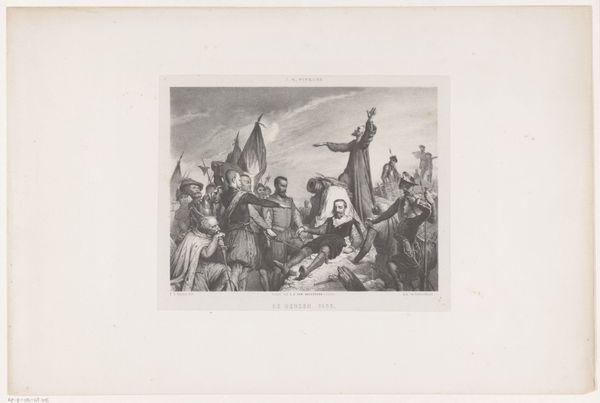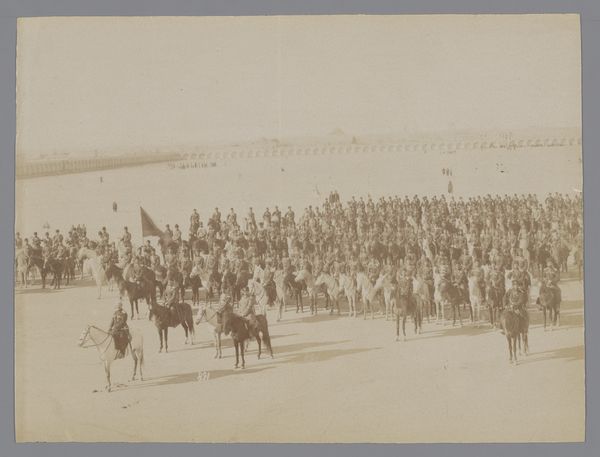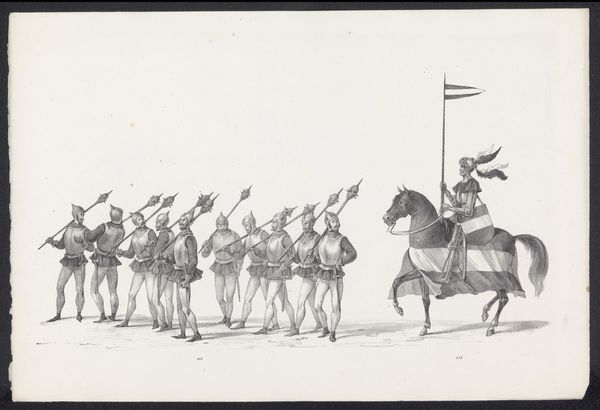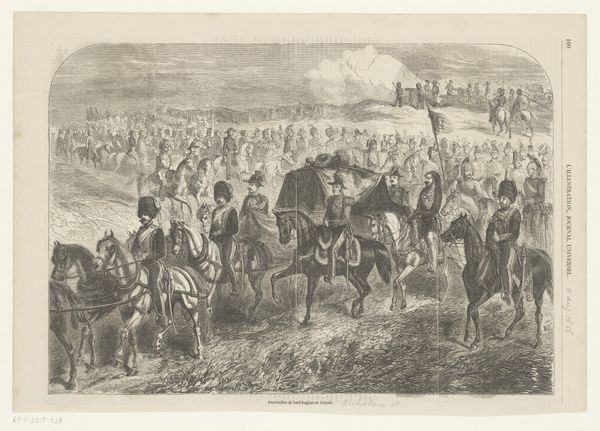
drawing, print, engraving
#
drawing
#
narrative-art
# print
#
history-painting
#
academic-art
#
engraving
#
realism
Dimensions: Plate: 9 13/16 × 14 1/16 in. (25 × 35.7 cm) Sheet: 11 11/16 × 16 15/16 in. (29.7 × 43.1 cm)
Copyright: Public Domain
Curator: This is "The Vanquishers of Salamis," an engraving created in 1889 by the Gebbie & Husson Company. It depicts a scene from the aftermath of the Battle of Salamis. It’s part of the Metropolitan Museum of Art’s collection here in New York. Editor: Whew, that's a lot going on! It has the kind of frenetic energy you get after a really good party, or, well, after winning a huge sea battle apparently. But whoa, those ladies sprinting toward us—what's their story? Curator: The image illustrates the jubilation and celebration following the Greek victory over the Persian fleet. Notice how the women rush forward to greet the returning warriors, likely bearing gifts and praise. These depictions reinforce societal expectations surrounding gender and the glory of war, celebrating victors and the idealized role of women in ancient society. Editor: Right, because after you witness actual brutal warfare the first thing you would want to do is run screaming towards armored dudes with spears. Hmm. Still, I can feel their exhilaration leaping off the page; and, I mean, from a design point of view, the way the engraver used all those lines and textures really gets that sense of dynamic movement. Curator: Absolutely. The academic and realist style of the engraving prioritizes accuracy, historical detail, and a sense of grandeur befitting the subject. Prints like these had great value, circulating history as something for the masses. Reproductions played an important role in disseminating cultural values. Editor: I can imagine. I do wonder, though, about romanticizing conflict like this. Maybe there were also broken people with trauma. Curator: Undoubtedly. But works like this often serve political agendas of patriotism and national pride. Images depicting battles, leadership, courage—they’re meant to unite and inspire. It's something to remember about imagery: it participates actively in making historical narratives, and is far from any "objective" recording. Editor: I guess even celebrating "the good guys" is never a totally neutral act. Something to remember for sure. So, all this violence can transform so quickly into joy for the survivors… humans are so interesting. Curator: Indeed, it underscores how deeply history, emotion, and politics are interwoven, even in seemingly simple celebratory scenes like this.
Comments
No comments
Be the first to comment and join the conversation on the ultimate creative platform.
